Not sure when to come to Scotland? We’ve got you covered with a guide to the shoulder season. Spend spring in Scotland for mild weather, fewer visitors, and plenty of activities. Or travel during the autumn in Scotland to enjoy the end of the summer season and enchanting, colourful landscapes.
We’re here to tell you the most amazing reasons to visit Scotland during this time of the year and answer your most frequently asked questions. Read on for local recommendations as we share insider knowledge with you.
Contents:
Why you should travel to Scotland during the 'shoulder season'
You may be wondering what the shoulder season is? It’s what we, in the travel industry, call the season just before and just after the summer. In other words, it's spring and autumn. And in Scotland this means April-May and September-October.
Scotland is amazing all year long, so you can never go wrong! Also, the beauty of having weather that is similar throughout the year is that there isn’t a period of intense cold or intense heat to avoid.
However, the ‘on’ and ‘off’ seasons are very real. Scotland is extremely popular with travellers for obvious reasons.
Many of the nation's attractions are closed during the winter. As a result, your window for booking hotels, guesthouses and activities is narrower. And this means accommodations often book out early for the summer too.
For that reason, we believe that travelling during the spring or autumn months may give you the best of both worlds, mild temperatures with plenty of attractions and less crowds.
Here are the top 5 reasons why you should visit Scotland in the fall or the springtime:
1. Mild weather
While July and August are often the warmest months, with average daytime temperatures of 17°C (63°F), you may still enjoy glorious, sunny days during the shoulder season.
Statistically speaking, you’ll probably be surprised to hear that April is often the driest month of the year. And May and September also enjoy fair weather, which is ideal for sightseeing.
- In May and September, you could join a small group tour around Scotland to meet like-minded travellers and learn from a local tour guide
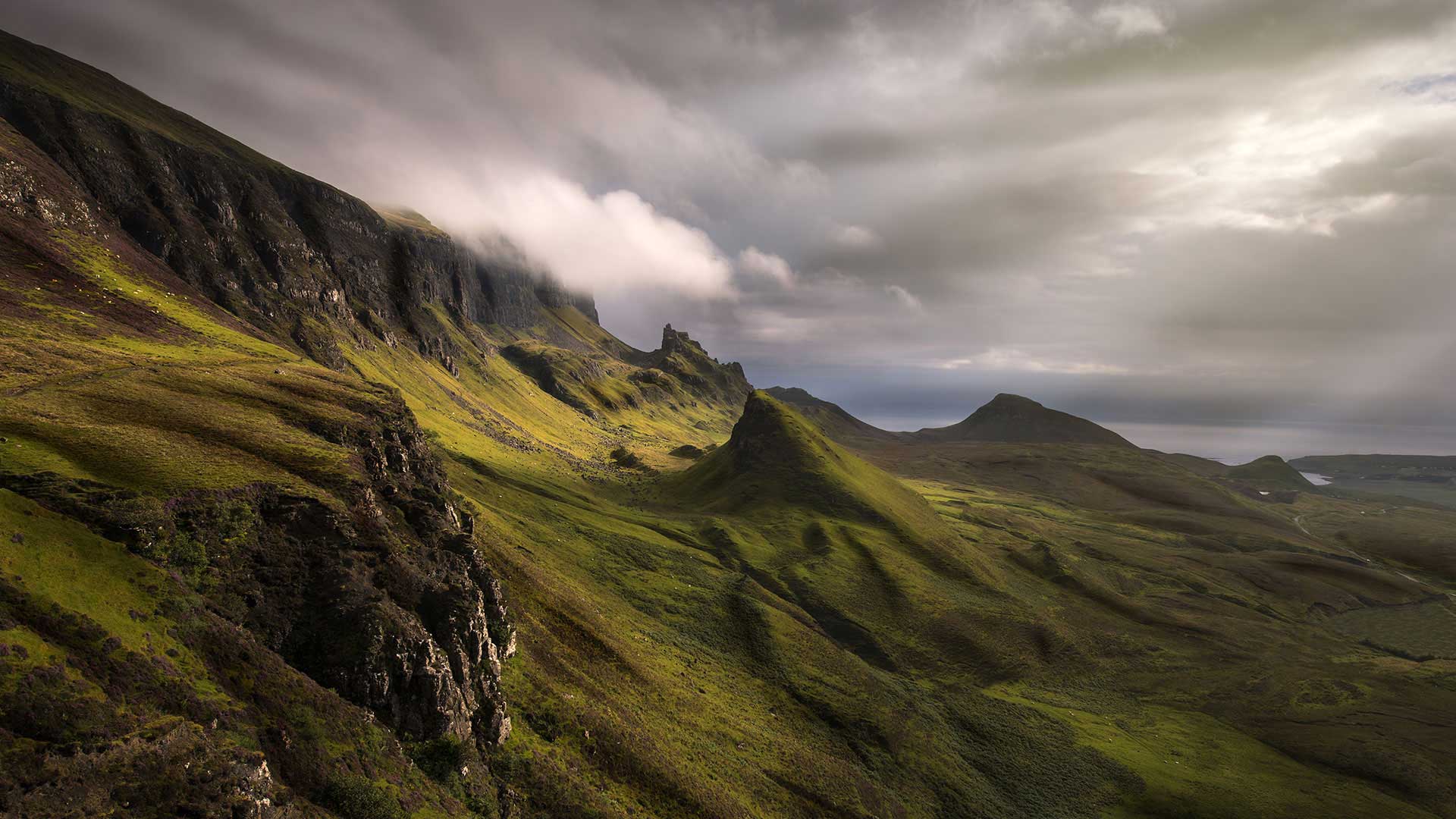
2. Smaller crowds
During the summer, some hotspots are favourites with travellers. One example is Edinburgh. The capital is buzzing especially during August, which is known as the ‘festival month’. Another top spot is the Isle of Skye, which has become increasingly popular with visitors in recent years.
So if you’re looking for a peaceful and relaxing Scottish holiday, summer in some locations may not be the best choice.
On the other hand, travel in the shoulder season and you’ll be able to take advantage of plenty of activities and mild weather. And with smaller crowds you'll enjoy them even more!
3. Plenty of attractions to savour
If you’re not sure if you should come during the off-season because the places that you really want to see are closed, then worry not! Attractions that shut down during the winter usually reopen in April.
In fact, in Scotland, most of the big attractions are open all year. This includes the castles of Edinburgh and Stirling, as well as many whisky distilleries.
That said, during the winter these may operate under reduced hours, but they are still available. For example, Crathes Castle only opens on weekends from November until the end of March.
- Enjoy the open road of Scotland on a road trip around the country
- Related: Read more about the best road trips to take in Scotland
Some attractions do close completely over the winter. These include the famous Jacobite Steam Train. So if you’re a fan of Harry Potter make sure to visit when the train runs – from April to October.
This time of year – April to October – is also ideal for exploring the Scottish islands. Plus, ferries are more frequent and you're less likely to be affected by bad weather.
4. Better light for photographers
In the summer, Scotland experiences long daylight hours, with sunrise around 4 AM and sunset around 10 PM. Meanwhile, in winter the opposite is true. But the fewer hours of daylight make it easier for photographers to benefit from the blue and golden hours as these are at a more reasonable time of day.
So if you come at the edge of either spring or autumn, before or after the clocks change, you’ll still be able to take advantage of this perfect natural photography light. And it’ll make your trip photos even more stunning!
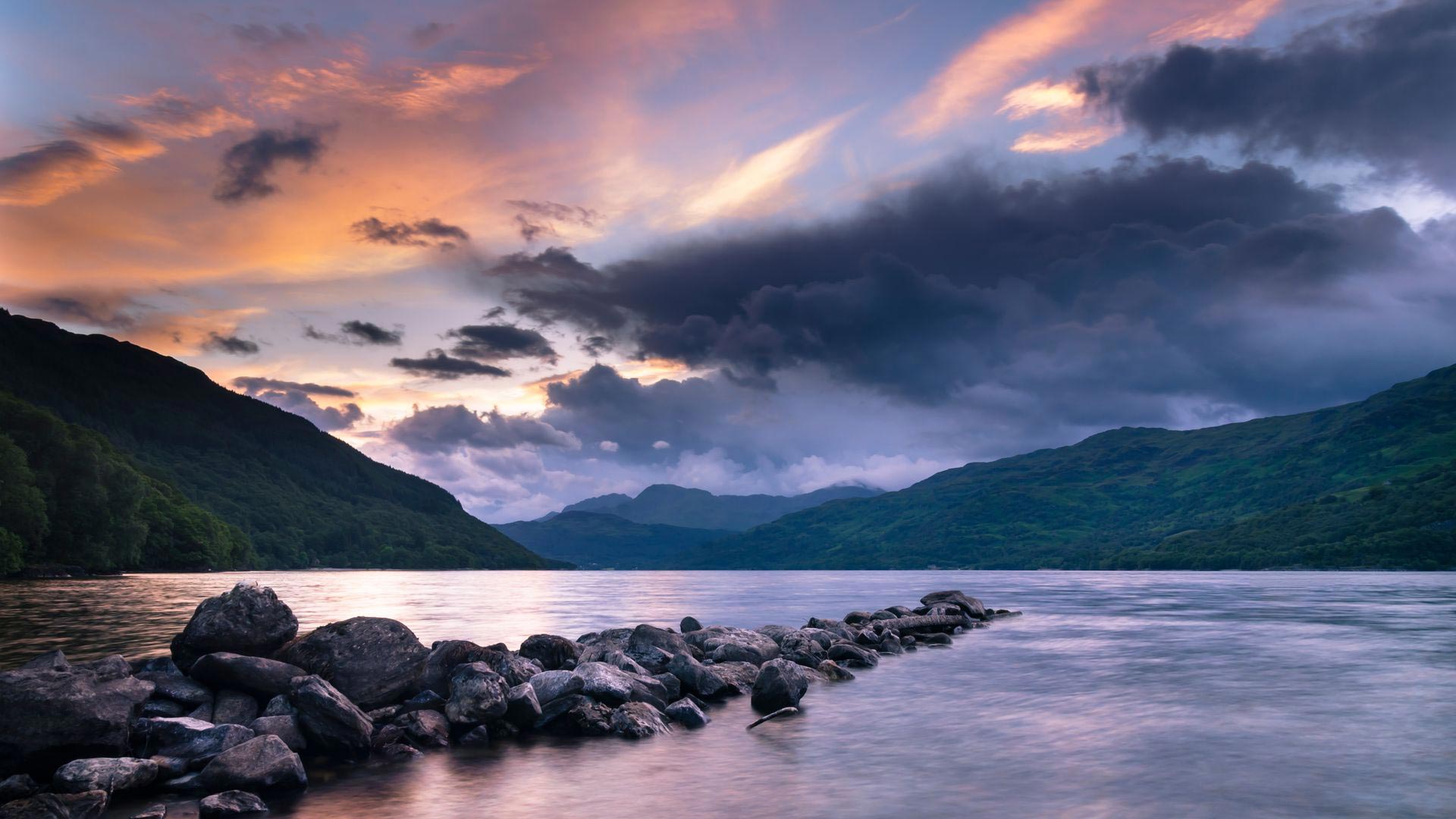
5. Spectacular landscapes
Scotland's lush and green natural landscape never stops being gorgeous. Thanks to its wetter climate, summer scenery is vibrant with trees, flowers and heather galore. And even in winter, you’ll find beautiful Douglas fir trees lightening up the grey and snowy hills.
But it's during the spring and autumn that Scotland shows off its most colourful scenery.
In the spring, the flowers start to bloom, including pretty snowdrops and cherry blossoms. And by late September, the autumnal colours start to show around the country. With trees turning orange, yellow and red, the countryside sparks into stunning fiery tones.
That makes the shoulder season a great time to come and soak up the various colours of Scotland.
- Go island hopping and discover the unique heritage of the many Scottish isles on these tours
Below we’ve compiled information about travelling to Scotland in spring and in autumn to help you decide when you'd like to travel. Read on, and you’ll soon know what to expect, what to pack and where to go during the shoulder season.
Travel to Scotland in spring
Are you planning a trip to Scotland during this time of year? Or maybe you’re simply looking at when is the best timing to do your favourite activities. We’ve answered your most frequently asked questions to help you plan your spring trip to Scotland.
WHEN IS SPRING IN SCOTLAND?
Spring in the northern hemisphere technically starts on the 20 March, at the equinox, and lasts until the 20 or 21 June, the summer solstice. This is also the case in Scotland.
Spring is when temperatures start to rise, trees and flowers start to blossom, and when attractions start to open up again.
WHAT MONTH IS SPRING IN SCOTLAND?
The months that make up the spring season are March, April and May. However, for travelling at this time of year, we’ll be referring to April and May.
This is because April usually marks the start of the travel season. At this time, attractions as well as ferries start to reopen or extend their operating hours.
The other detail that is important to separate this time of year is daylight saving. It usually starts in the UK around the end of March, meaning that from April the days are much brighter and longer. This is ideal for exploring Scotland as you can make the most of your day.
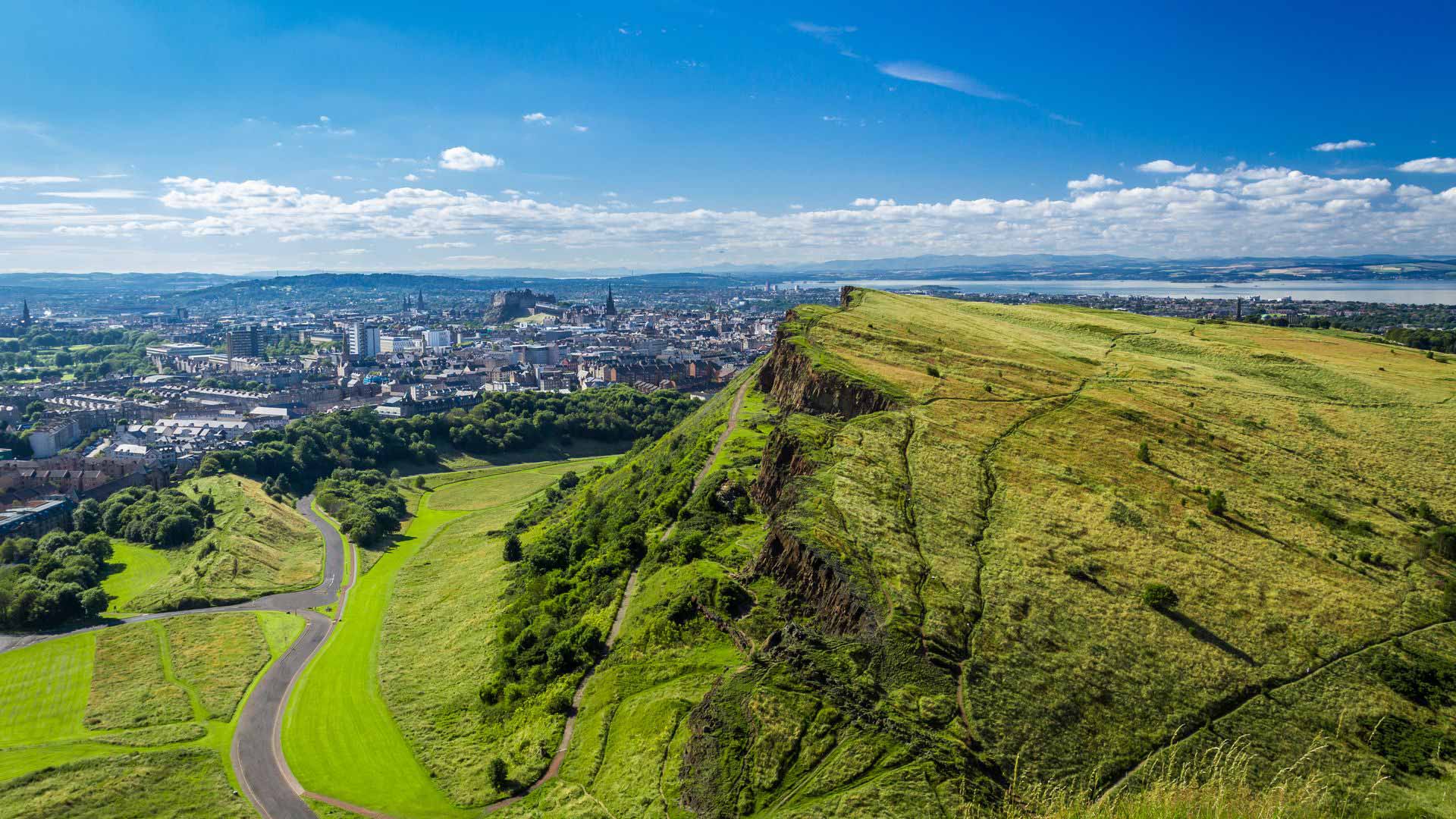
WHAT IS SPRING LIKE IN SCOTLAND?
Spring is a season of change. From greyer landscape, in April and May, you’ll be able to witness the fresh greens and newly budded trees of Scotland. Admire the fields of daffodils that light up the countryside and the pink hues of the cherry blossoms.
During the spring months, you can also expect changeable weather. March can bring some snow and frost with cool temperatures. April is usually the driest month of the year in terms of rain. And May is often gorgeous with warm days up into the mid-20s°C (77°F).
Another bonus? The landscape may look even more dramatic if there is still some snow up high in the mountains. Snow-capped mountains with hills full of flowers below make for fantastic photos.
- Follow in the steps of your ancestors with a heritage tour of Scotland
- Related: Learn more about Scottish clans
IS SPRING IN SCOTLAND COLD?
The weather can be changeable, but no, generally speaking, the Scottish weather isn’t too cold. In fact, it is fairly mild compared to many Northern European countries.
If you’re coming from the colder parts of the United States or Canada, you may find similar temperatures at that time of year. Although if you’re coming from the Southern Hemisphere, we recommend bringing some warm layers!
Scotland enjoys average temperatures ranging from 5-10°C (41-50°F) in March and April. That is until May when they start climbing higher. What you can expect however is for the wind and humidity to make days feel colder.
Be prepared with thermal, windproof, and waterproof layers! This way you’ll enjoy all the activities you want to do regardless of what the weather throws your way.
April and May often have heatwaves that may take the weather up into the mid-20s°C (77°F). So you never know!
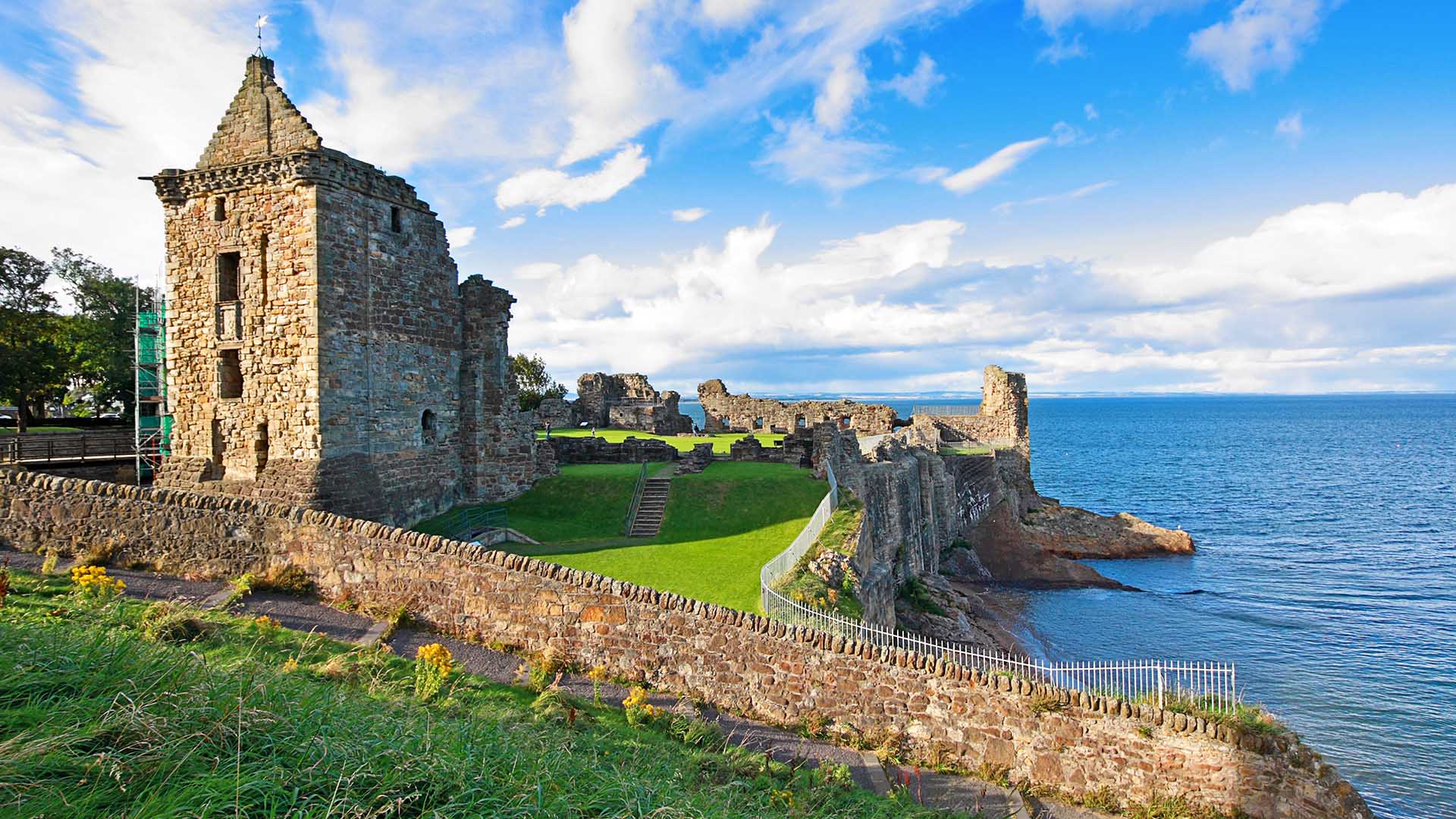
ARE THERE MIDGES IN SCOTLAND IN SPRING?
Spring is a good time to visit Scotland if you’re trying to avoid midges. They usually start appearing in May, with the peak being the months of July and August.
WHAT TO PACK FOR SCOTLAND IN SPRING?
In April and May, you can expect mild weather on average. For that reason, we recommend layers. This way you can remove or add clothes depending on the day’s weather.
But make sure to check the weather reports before setting off on your tour! It’ll tell you if you’re likely to wear shorts or if you should leave them at home.
Here is a list of packing essentials for your spring trip:
- Lightweight layers, including t-shirts, long sleeve shirts, and shorts
- At least one warm jumper or fleece
- Waterproof jacket or shell layer
- Waterproof trousers
- Light scarf and gloves
- Warm hat and sun cap
As well as these essentials, be sure to bring good sturdy walking or hiking boots depending on what activities you may want to enjoy.
You may also want to bring sunscreen if you come later in the season, especially if you intend to go hiking. A water bottle is also handy. The water in Scotland is good to drink and you can refill before setting off on your day’s adventure.
WHERE TO GO IN SCOTLAND IN SPRING?
Spring is a great time to visit all of Scotland! Yes all of it, from the northern isles, to the Highlands and the buzzing cities. Nothing is out of bounds, and we hope you’ll take advantage of it.
To give you an idea of the best things to do at that time of year, we’ve compiled our favourite locations in Scotland for spring:
- Don’t miss the beautiful Scottish Highlands to admire the iconic natural scenery, such as Glen Coe.
- Go hiking in the rugged Scottish hills. For easier walks we recommend Highland Perthshire, but you could also go up proper mountains like Ben Nevis near Fort William.
- Explore picturesque castles and ruins dotted around the country. This includes the castle-filled Royal Deeside as well as the bigger attractions such as Stirling Castle, Dunnottar Castle and Edinburgh Castle.
- Pop by seasides villages like St Andrews, which is home to Scotland’s oldest university and the home of golf.
- Go island hopping to Orkney to learn about Scotland’s Viking heritage, to the Outer Hebrides to immerse yourself in Gaelic culture, or even to Skye or Mull for more accessible stunning scenery.
- Taste the various whisky flavours and Scottish delicacies in regions like Speyside and Islay.
- Visit the botanic gardens in Glasgow or Edinburgh to see the spring awakening.
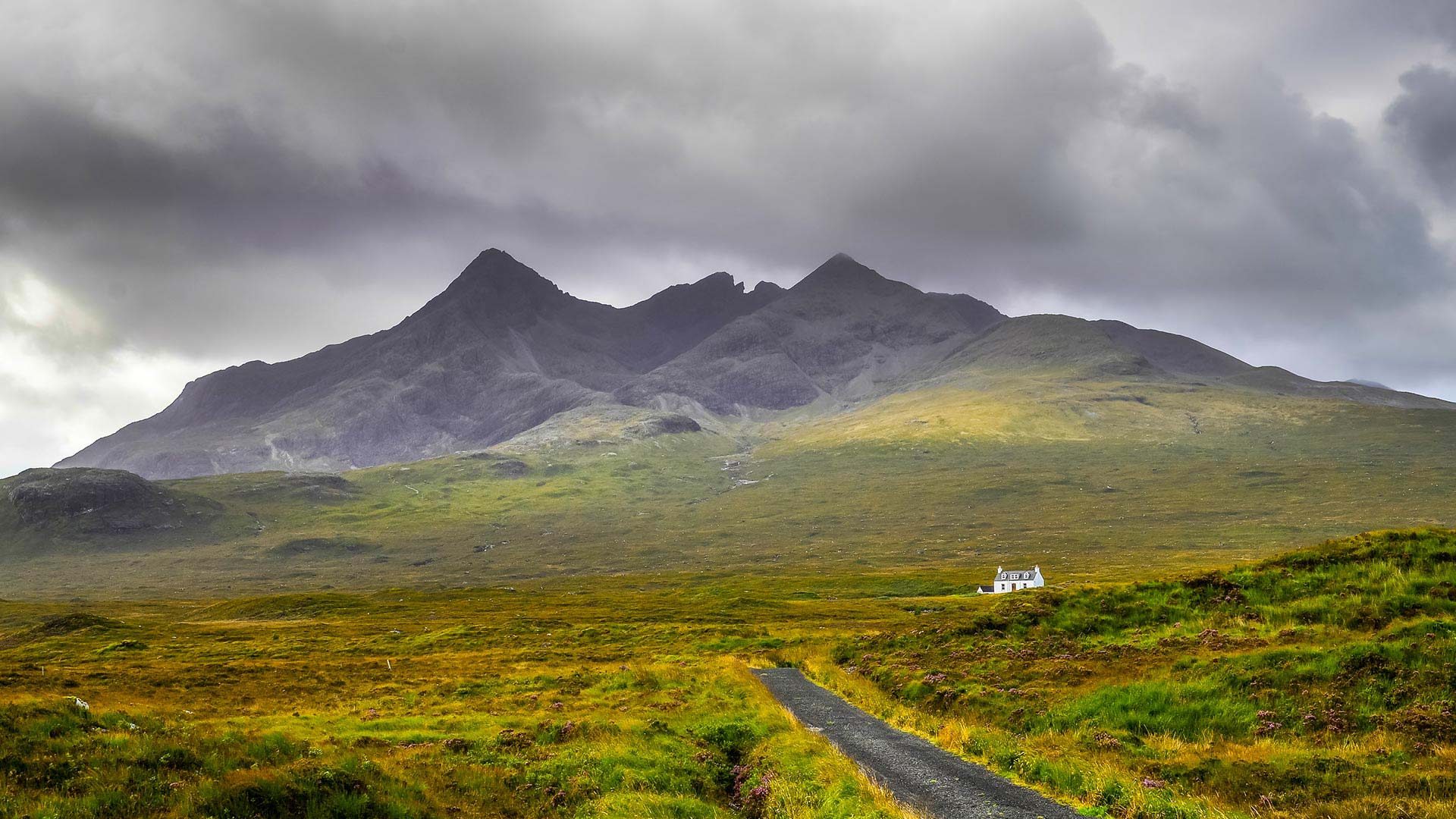
WHY VISIT SCOTLAND IN SPRING?
Because it is a fantastic time of year to see Scotland in all its beauty. Okay, maybe you need more than that. We can give you more reasons!
April and May are the beginning of the tourist season, meaning that the country is readying itself to welcoming travellers from all over the world. You’ll enjoy the same sights than you would encounter at the height of summer, but with less crowds.
Spring has enjoyable weather and long days to explore. And if you’re not convinced yet, we hope the following will inspire you.
Spring is a great time for wildlife watching. It is in fact the best time of year to spot puffins off the west coast. These lovely birds are often spotted on the Isle of Mull and the Isle of Staffa, but you'll also see them at other places along the Scottish coastline.
Another reason is the Highland Games. May marks the beginning of the popular Highland Games show season. If you want to attend one while you’re here, to absorb the traditional Scottish culture, this is a good time. There will be events held in Glasgow as well as the Highlands.
May is also known as the “whisky month”. Spring is indeed a good time to visit if you love the Scottish water of life.
You could attend the Spirit of Speyside Whisky Festival in late-April, early-May. Feis Ile, the Islay Festival of Music and Malt, is held in late May, and the Highland Whisky Festival is also hosted at this time.
- Check out these Scotland tours with distillery visits
Travel to Scotland in autumn
Visit Scotland after the summer, but before the winter to experience the best of both worlds. In early autumn you can enjoy the last remnants of summer temperatures and the start of the cosier season.
Read on for our top suggestions on where to go at this time of year and what you can expect. We’ve answered your most frequently asked questions to help you plan your autumn trip to Scotland.
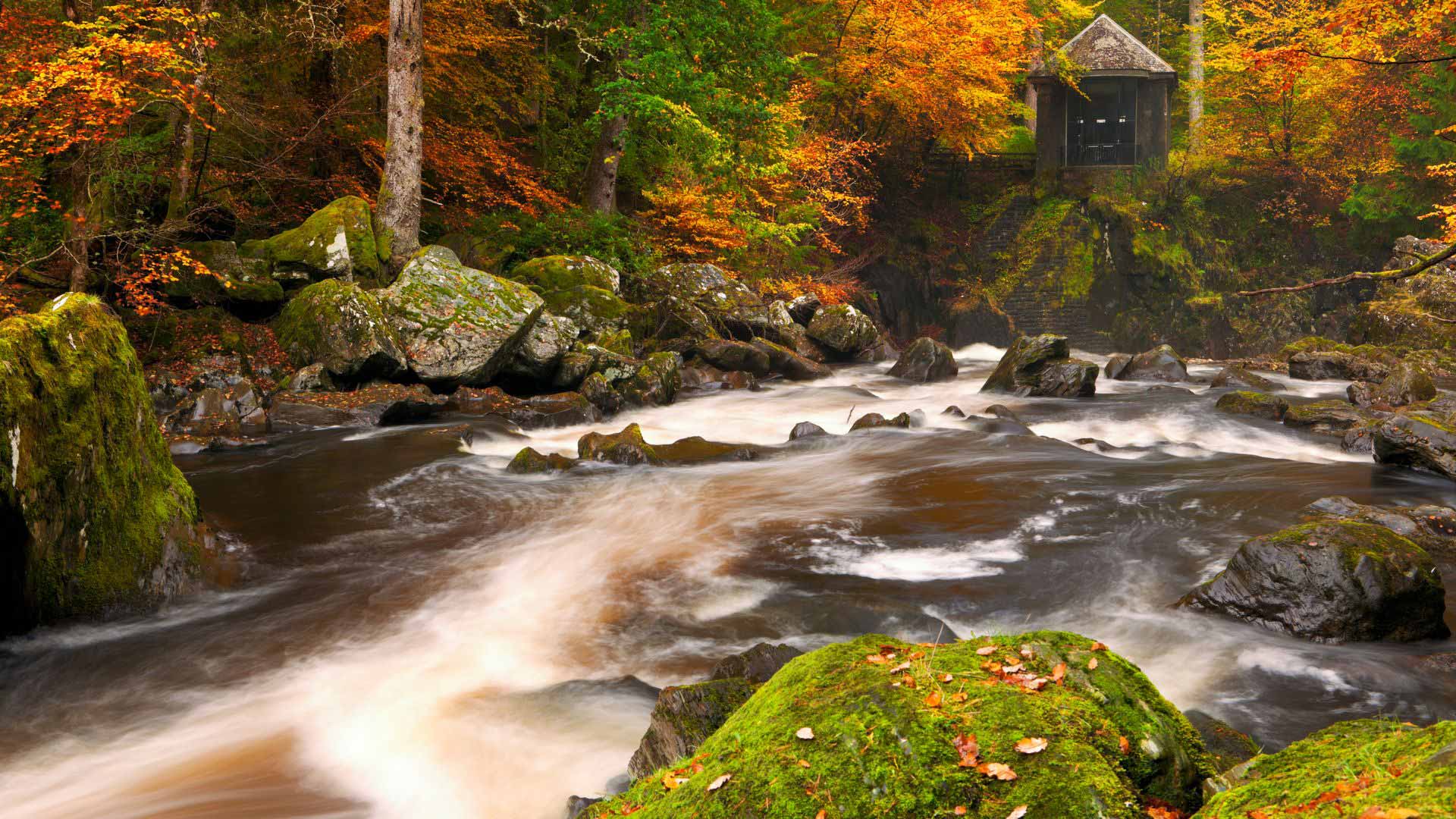
When is autumn in Scotland?
Autumn, or fall, in the Northern Hemisphere is technically from the September equinox to the December solstice. In terms of truer season, Scotland experiences this transitional season along the months of September, October and November.
Autumn is marked by a drop of temperatures and a change in the foliage colour. It is also when attractions and accommodation close up after the busy summer season.
What month is autumn in Scotland?
The months of autumn, or fall, are usually September, October and November. However, for travelling at this time of year, we’ll stick to the first two. This is because October is usually the end of the busy travel season.
From November, the winter starts to set in, attractions close for the season, or there are reduced hours of operation. The end of October also marks the end of daylight saving. This means that the days get shorter and darker from that point on.
What is autumn like in Scotland?
September and October are transitional months in Scotland, between the cool summer and wet winter. The foliage will start to change to autumnal colours, the days will become shorter and the temperatures start to drop.
At this time of year, the transition from summer to winter means the weather can be varied. You may encounter warm days between 15-20°C (59-68°F), but generally the temperatures start to fall toward an average of 10°C (50°F).
When are fall colours in Scotland?
Come between late September and early November to enjoy the gorgeous changing foliage and autumnal colours. In Scotland, trees change from green to golden, with orange, yellow and red hues.
Head for forested areas to make the most of it. We recommend the Loch Lomond area, Highland Perthshire and Deeside, where the landscapes are exceptionally beautiful.
Is autumn in Scotland cold?
Indeed the fall season is when temperatures start to drop towards winter weather. Thankfully Scotland benefits from a mild climate that means the drop isn’t too drastic. You’ll probably find that, in fact, there is only a difference of a few degrees between August and October.
In September and October, the average temperatures vary between 12°C (54°F) and 5°C (41°F). The main difference is that you can expect more wind and rain, which may make you feel colder. There are also more chances of storms at this time of year, going into winter.
If you visit Scotland in September, you may be lucky enough to encounter some warm days too.
You can find out more about the weather in Scotland with our handy weather guide.
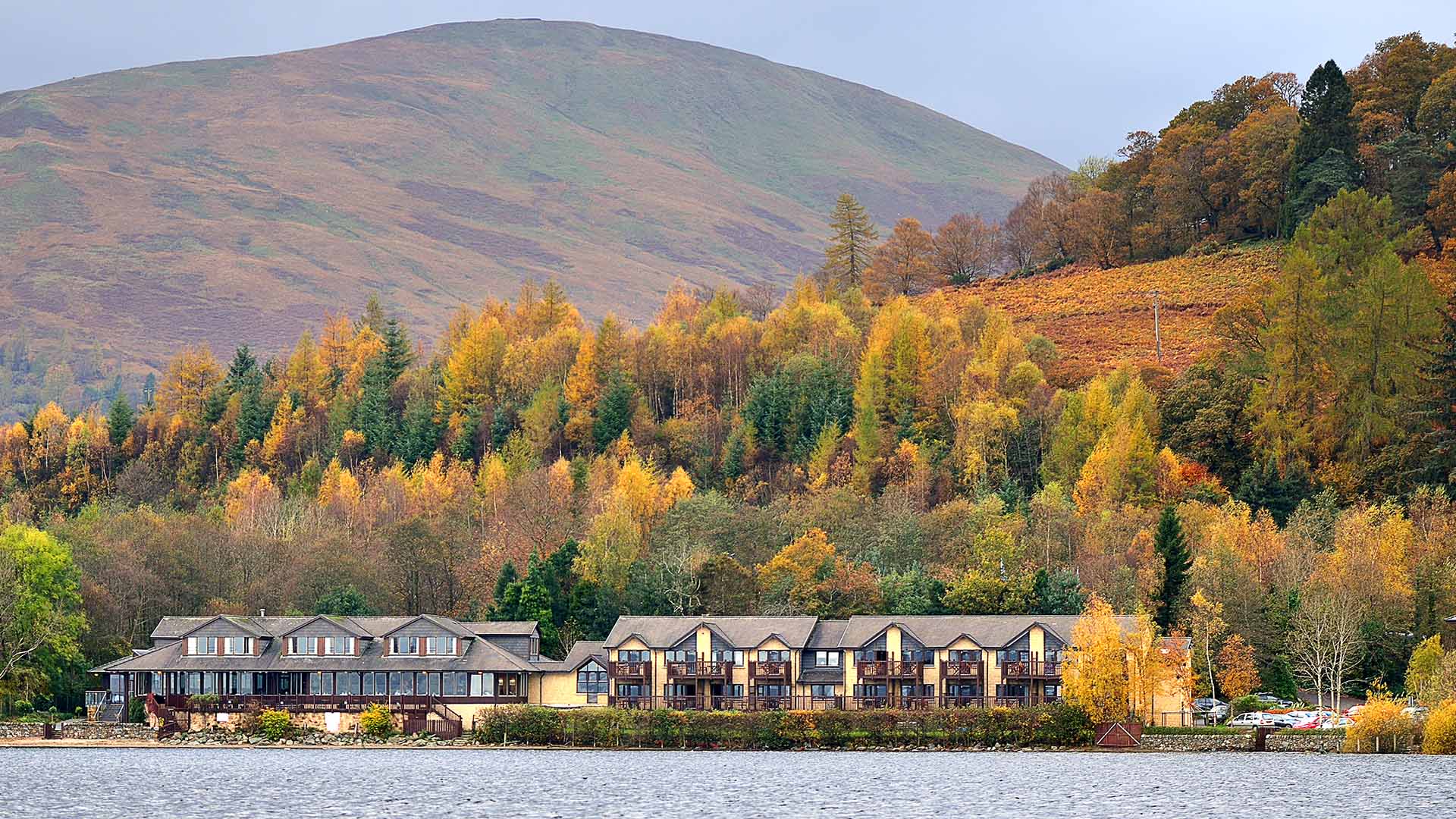
Are there midges in Scotland in autumn?
In early autumn it is likely that you’ll still find some midges about. They are at their peak in July and August, so they are often still present in September. But from then, you’ll find them less and less as the temperatures drop.
It’s good to remember that they appear most often in the early morning and late evening, near bodies of water or after it has rained. For peace of mind, you could bring a repellent if you come in September.
What to pack for Scotland in autumn?
The weather is changeable at this time of year, so your best strategy is to pack and be ready for everything. From rain to sunshine, passing by wind and frost.
September can be mild and have warm days, with the last remnants of summer. But by October, you can probably expect cooler temperatures, more wind and more rain.
Remember, the natural beauty of Scotland doesn’t get dampened by the climate so don’t let it dampen your spirit. Bring layers so you can add or remove depending on the day’s weather. This way you can enjoy your trip to the fullest, regardless of what Mother Nature throws at you.
Here is a list of packing essentials for your autumn trip:
- Lightweight layers like t-shirts and long sleeve shirts
- Warm jumpers or fleeces
- Waterproof and windproof jacket or shell layers
- Waterproof trousers
- Light scarf, gloves and a warm hat
Like for spring, we also recommend bringing a pair of good sturdy walking or hiking boots. Even a walk near a city may be a bit muddy so it’s best to have waterproof shoes.
You could also bring an umbrella, but as the winds pick up at this time of year, you may find you don't open it much.
Where to go in Scotland in autumn?
Everywhere! Okay, okay, we know, you can’t go everywhere. We can narrow down the list for you to some of our favourite locations for an autumn trip:
- Explore the cities of Edinburgh and Glasgow to taste the local cuisine and immerse yourself in the culture of Scotland.
- Head for an adventurous drive through the Scottish Highlands. You’ll see the changing landscape of the mountains and valleys, like Glen Coe and Glen Affric.
- Highland Perthshire is a terrific location to witness the stunning autumn foliage. Known as “Big Tree Country”, this area is covered in a beautiful forest. The Hermitage is one of the best locations to go for a forest walk and admire the autumnal colours contrasting with the dark green hues of the tall Douglas fir trees.
- Try dipping your toes, or simply admiring the mighty lakes of Scotland, like Loch Lomond and Loch Ness.
- Head for the Victorian town of Pitlochry in October to attend the fantastic light show called Enchanted Forest.
- Go hiking the Quiraing or the Old Man of Storr on the Isle of Skye, or explore more of the Scottish isles.
- Drive sections of the North Coast 500, one of Scotland’s most scenic drives. It is far less busy at this time of year and you could take in sights like the hidden Smoo Cave in peace.
- Explore picturesque castles and ruins dotted around the country. This includes the castle-filled Royal Deeside as well as the bigger attractions such as Stirling Castle, Urquhart Castle and Edinburgh Castle.
- Take on the national parks. They are ideal for hikes, walks or even scenic drives. Head north to the Cairngorms National Park for high peaks and distilleries galore. The Loch Lomond and Trossachs National Park is another popular area.
- Want to delve deeper into the Scottish culture? Look up our private tours to have your very own guide drive you and tell you local stories
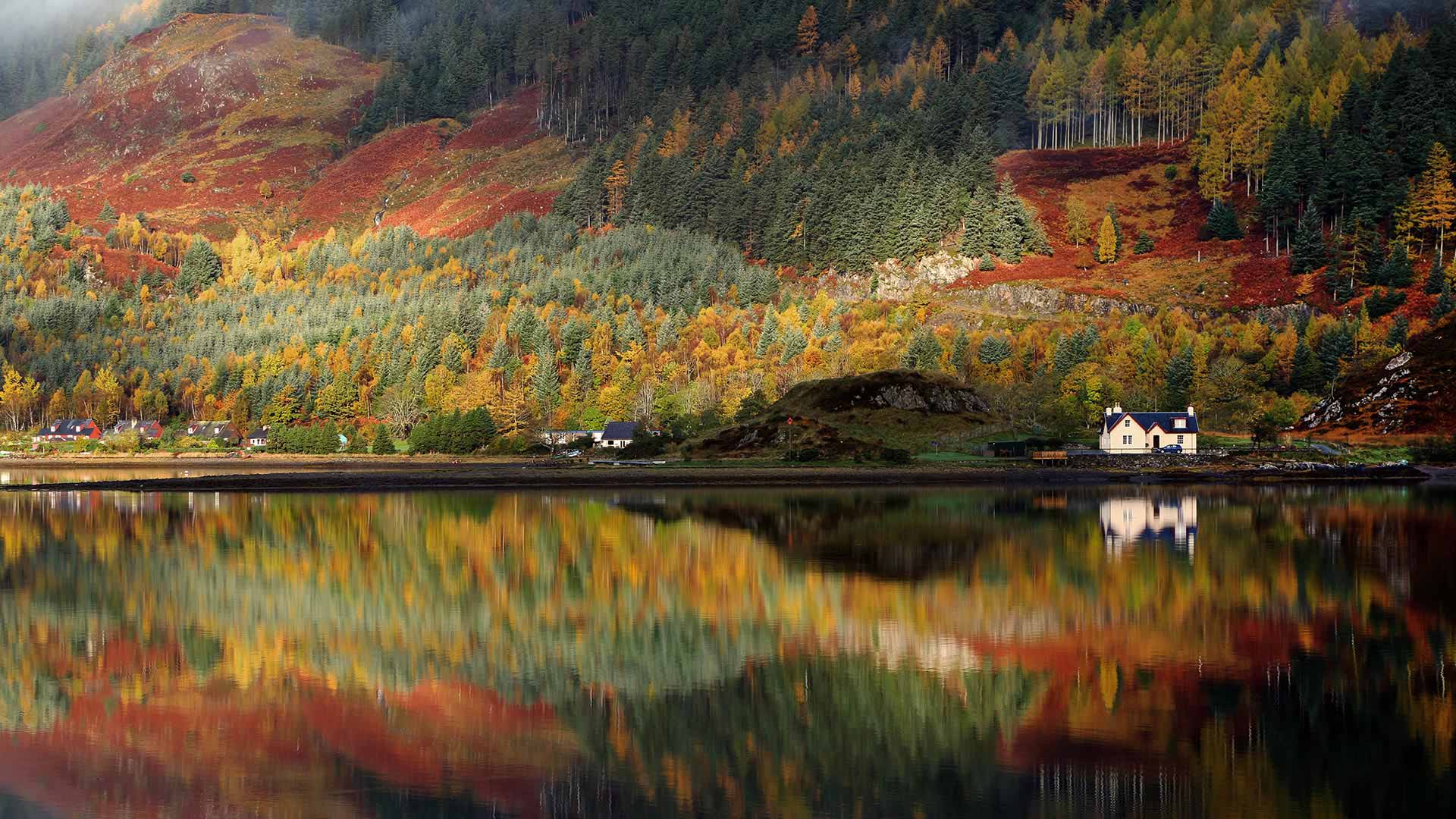
What is the best location to spot the northern lights?
From September, when daylight hours are becoming shorter, it is possible to see the aurora borealis in remote corners of Scotland, but it’s still rare.
For your best chances of spotting the auroras, we recommend heading north into the “Northern Lights Belt” between October and March. You could pick a northern lights tour in Iceland, Lapland or Northern Norway.
Why visit Scotland in autumn?
September and October, which see the winding down of the high tourism season, are excellent months to experience a quieter side of Scotland.
As the trees start changing colours and the temperatures start dropping, it’s a good time to take on a road trip with smaller crowds. And imagine spending your evenings enjoying gourmet meals and a glass of local whisky, in the cosy warmth of true Scottish hospitality? Doesn’t that sound perfect?
- Interested in a honeymoon or romantic trip to Scotland? Check out these packages for a unique trip with your loved one
- Related: Read about why Scotland is perfect for a romantic getaway
Another bonus? Wildlife watching! Autumn may mean your sightseeing if even more exciting than normal, with the chance to spot some of Scotland’s Big 5.
Scotland has a large population of red deer, which can be spotted anywhere and anytime, even near cities and in people’s gardens. The best time of the year to see stags (the male deer with antlers) is during autumn, as this is their breeding season.
As for seals, they usually give birth between late September and late November. This means you may be able to see seal pups around Scotland during this time, especially on the west coast.
Have we convinced you that this is the best time to visit Scotland? Spend your spring or autumn in Scotland enjoying the sights and immersing yourself in the nation's culture and history.
To start planning your autumn or spring tour, check out these Scotland itineraries and get in touch with one of our local travel consultants. Based in Edinburgh, they’ll use their insider knowledge to make your dream trip a reality!
